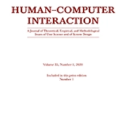There has been a considerable amount of research aimed at automating the documentation of accessibility in the built environment. Yet so far, there has been no fully automatic system that has been shown to reliably document surface quality barriers in the built environment in real-time. This is a mixed problem of HCI and applied machine learning, requiring the careful use of applied machine learning to address the real-world concern of practical documentation. To address this challenge, we offer a framework for designing applied machine learning approaches aimed at documenting the (in)accessibility of the built environment. This framework is designed to take into account the real-world picture, recognizing that the design of any accessibility documentation system has to take into account a range of factors that are not usually considered in machine learning research. We then apply this framework in a case study, illustrating an approach which can obtain a f-ratio of 0.952 in the best-case scenario.
翻译:已经进行了大量研究,旨在将建筑环境无障碍文件自动化,但迄今为止,还没有完全自动的系统能够可靠地实时记录建筑环境中的表面质量障碍,这是HCI和应用机器学习的混合问题,需要认真使用应用机器学习来解决现实世界对实际文件的关切。为了应对这一挑战,我们为设计应用机器学习方法提供了一个框架,目的是记录(无法)建筑环境的无障碍情况。这个框架旨在考虑现实世界的图景,认识到任何无障碍文件系统的设计必须考虑到机器学习研究中通常不考虑的一系列因素。我们然后在案例研究中应用这一框架,说明在最佳情况下可以取得0.952法郎的准绳的方法。




